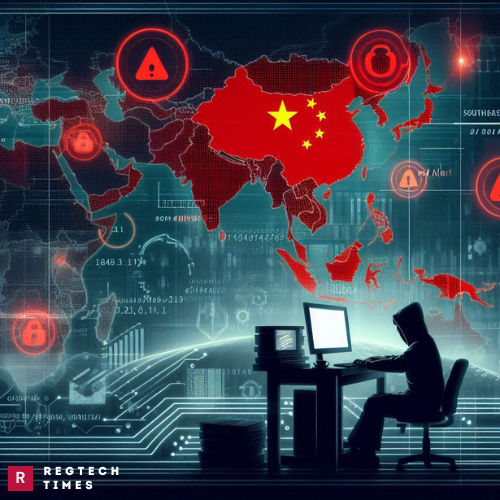In an era where cyber warfare is increasingly becoming a focal point of international tensions, the latest report from cybersecurity firm sheds light on the evolving and persistent threat posed by state-backed Chinese hacking groups. Dubbed “Crimson Palace,” this high-stakes cyber espionage campaign continues to target government organizations across Southeast Asia, showcasing a sophisticated level of cyber warfare that has adapted and expanded over time.
The Crimson Palace Campaign
Sophos’s recent report provides an in-depth analysis of Crimson Palace, an extensive cyber espionage campaign conducted by three Chinese state-backed hacking groups identified as Cluster Alpha, Cluster Bravo, and Cluster Charlie. These groups are connected to well-known Chinese threat actors, including APT15 and a subgroup of APT41 known as “Earth Longzhi.”
The campaign initially gained attention in 2023, but despite efforts to disrupt their operations, these groups have persisted, adapting their tactics and expanding their reach throughout 2024. The campaign’s ongoing nature highlights a complex cat-and-mouse game between the attackers and cybersecurity defenders.
Evolving Tactics and Techniques
The Crimson Palace attackers have demonstrated remarkable adaptability. After their custom tools were identified and blocked by Sophos, the hackers swiftly transitioned to using open-source tools. This shift emphasizes their capability to rapidly adjust their methods to circumvent security measures.
One of the notable tools used by the attackers is a novel piece of malware named “Tattletale.” This tool is designed to impersonate legitimate users who have signed into compromised systems. It gathers sensitive information related to password policies, cached passwords, browser data, and other critical data. The use of such advanced malware reflects the attackers’ focus on deep network infiltration and data extraction.
Expanding Impact and Reach
Crimson Palace’s impact has been substantial. Sophos has identified attacks on at least 11 organizations across Southeast Asia, including various government agencies and public service organizations. The attackers’ strategy involves compromising one organization to gain access to others within the same sector, using the trust established by these infected entities to deliver malware to additional targets.
The campaign’s primary objectives include data exfiltration and maintaining persistent access to victim networks. The attackers have stolen a wide range of sensitive information, including confidential documents, cloud infrastructure keys, authentication certificates, and IT and network configuration data. This data is invaluable for intelligence gathering and can have serious implications for national security.
The Geopolitical Context
The Crimson Palace campaign is not just a series of isolated attacks but is deeply entwined with broader geopolitical dynamics. The heightened tensions over territorial disputes in the South China Sea have amplified the stakes of these cyber operations. As diplomatic conflicts intensify, cyber espionage becomes a crucial tool for gathering intelligence and exerting influence.
Egisto Ott: The Controversial Espionage Case That Shook Austria
Chinese state-backed hacking operations have long targeted governments and organizations in Southeast Asia, seeking to gain strategic advantages and leverage sensitive information. The Crimson Palace campaign is a continuation of this broader pattern, reflecting the strategic importance placed on cyber capabilities in the context of geopolitical rivalries.
The ongoing nature of the Crimson Palace campaign suggests that we can expect to see continued evolution in these cyber operations. As Sophos has noted, the use of shared infrastructure and tools among Chinese state-backed groups indicates that the campaign may expand to new targets and regions. The attackers’ ability to adapt their tactics and techniques in response to defensive measures highlights the need for continuous vigilance and innovation in cybersecurity.
Organizations and governments in Southeast Asia must remain vigilant and proactive in their cybersecurity strategies. The Crimson Palace campaign serves as a stark reminder of the sophisticated and persistent nature of state-backed cyber threats and the critical importance of robust cybersecurity measures in safeguarding sensitive information.
The Crimson Palace cyber espionage campaign exemplifies the complexities of modern cyber warfare, where state-backed actors employ advanced techniques and persistent strategies to achieve their goals. As this campaign continues to evolve, it highlights the need for ongoing adaptation and resilience in the face of ever-changing cyber threats. For governments and organizations in Southeast Asia, the battle against cyber espionage is not just a technical challenge but a critical component of national security and geopolitical strategy.



